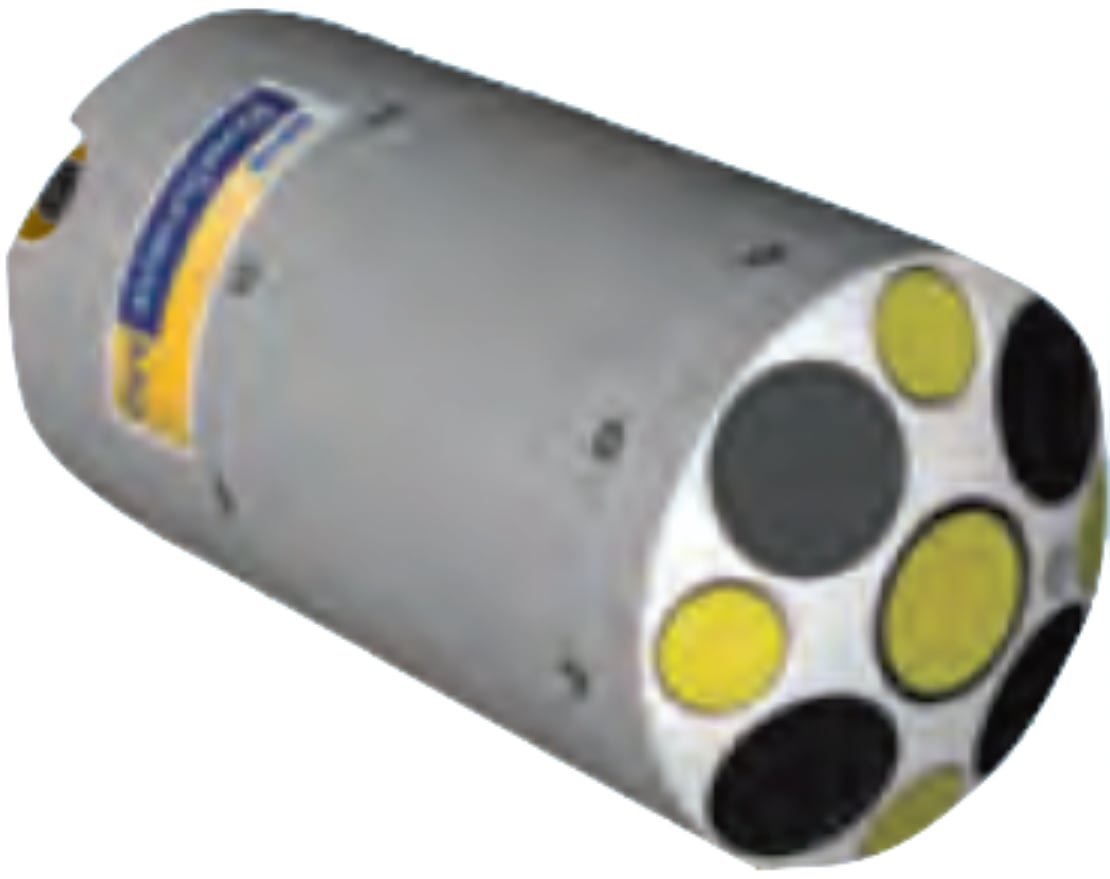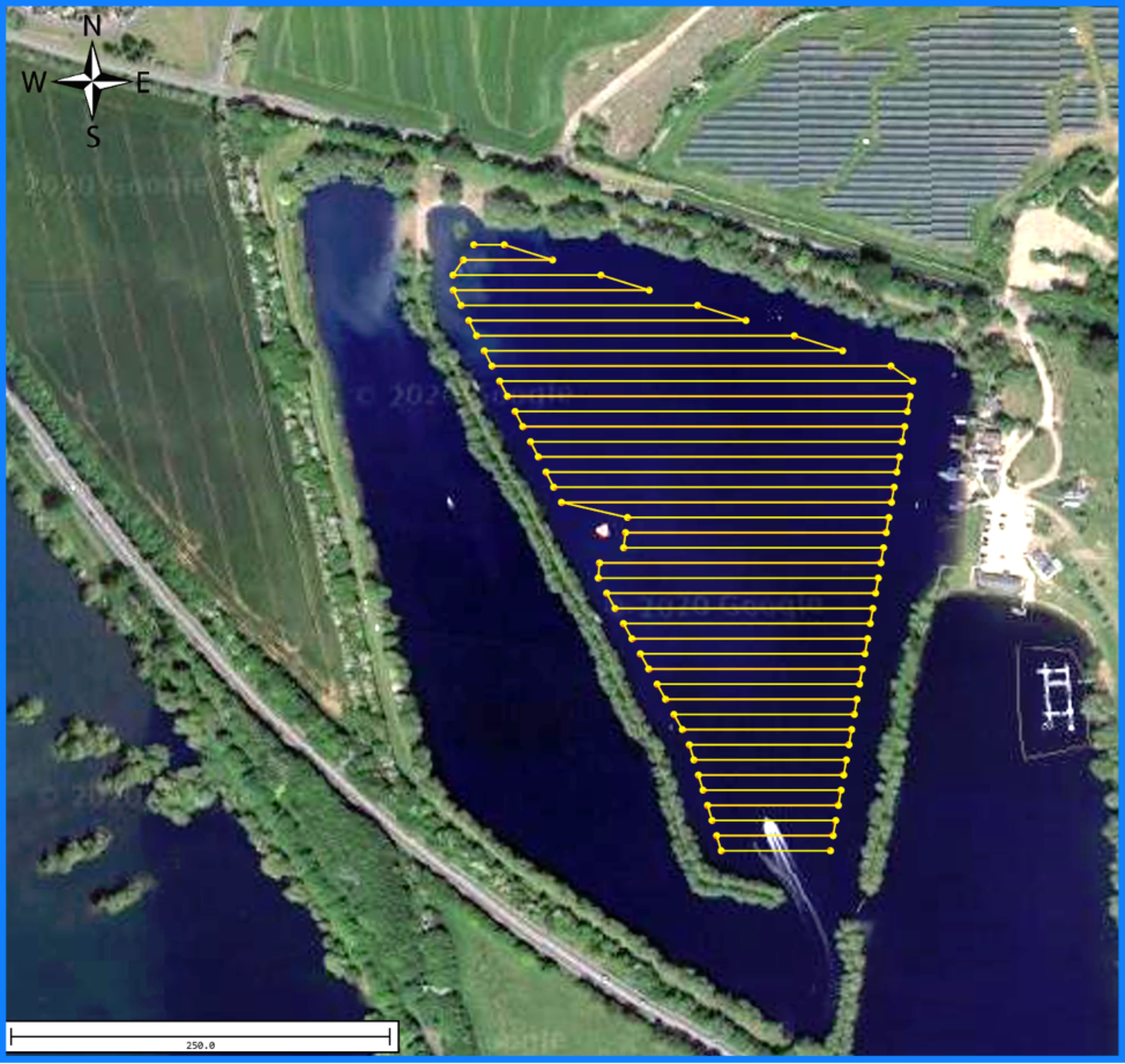Oil & Gas Pipeline Survey
Survey 3

The boat, for instance, is able to spin on its own axis.
The system as a whole is designed to operate from a dual 24VDC supply.
Two 24V battery packs feed a common 24V rail via power-steering diodes to prevent the packs from feeding into or discharging each other. This rail then feeds the motor controller directly, and 13VDC is derived from it to feed the moonpool connector for the instrument payload (SBP or otherwise).
A further 6.5VDC rail is derived by a sealed regulator located under the rear hatch for the steering servo. The controller, 13V regulator and remote-control receiver are housed inside a water tight enclosure that is located under a sealed hatch towards the front of the main hull. The dual battery packs are isolated through an isolator switch located inside the battery compartment.
We use two pairs of 24V 10Ah battery packs for each boat, each capable of supplying 40A. One pair is used at any one time while the other is being recharged or waiting as backup. Each battery pack comprises 20 D sized high-discharge NiMH cells. Two battery chargers are also supplied. Each battery pack weighs 3.7kg.
The control system also includes power limiting for the motors which is implemented to prevent burn-out if the propellers are stalled by debris etc.
The boats are provided with large hatches and internal compartments to permit easy access to batteries and control equipment.
The boats are designed to carry SBP, or other instrumentation, across water bodies in a very controlled manner in conditions ranging from low summer flows (or lakes with no flow) up to flood flows of 5 meters per second.


The normal measurement technique is to ‘ferry-glide’ the boat from one bank to the other 4 or 8 times for hydrological survey. For pipeline survey, we use autopilot with about 200 waypoints for 100 m from shore to shore.
This allows the SBP/EML system to collect sufficient data, and allows the high-resolution modes (which are sensitive to fast or unsteady boat motion) to collect good quality data.
The boat is also usually held off the banks by autopilot by one or two meters for a short period (say 10 seconds) to get edge data. Good low speed control is essential to allow this.
The Scan4Pipes Boats allow separate control of the rudders and differential motors so as to provide the user with maximum maneuverability options.

The use of differential motor control as the sole means of steering is not ideal as:
Control when ferry-gliding across rivers is more difficult than with rudders; Wear on motors and drivetrain is greatly increased due to numerous changes in motor state (forward, reverse, high throttle, low throttle).
Twin rudders work well as they allow subtle changes in boat orientation while ferry-gliding across river. The motor output can be set and boat course adjusted simply with minor movements of the rudders.
The performance figures for the fully loaded S4P boats are: Maximum speed - 5m/sec Minimum operating speed (still water) - 0.1m/sec.
Scan4Pipes Europe GmbH
Umgehungsstraße 78b - Hauptgebäude
D-99441 Mellingen
Germany
E-Mail: office@scan4pipes.com
Phone: +49 176 346 928 81
Website: scan4pipes.com
© Scan4Pipes Europe GmbH 2019 - 2023
Steuernummer: 162/118/05297
USt.-IdNr.: DE328138499
Registergericht: Jena
Handelsregister: HRB 516297